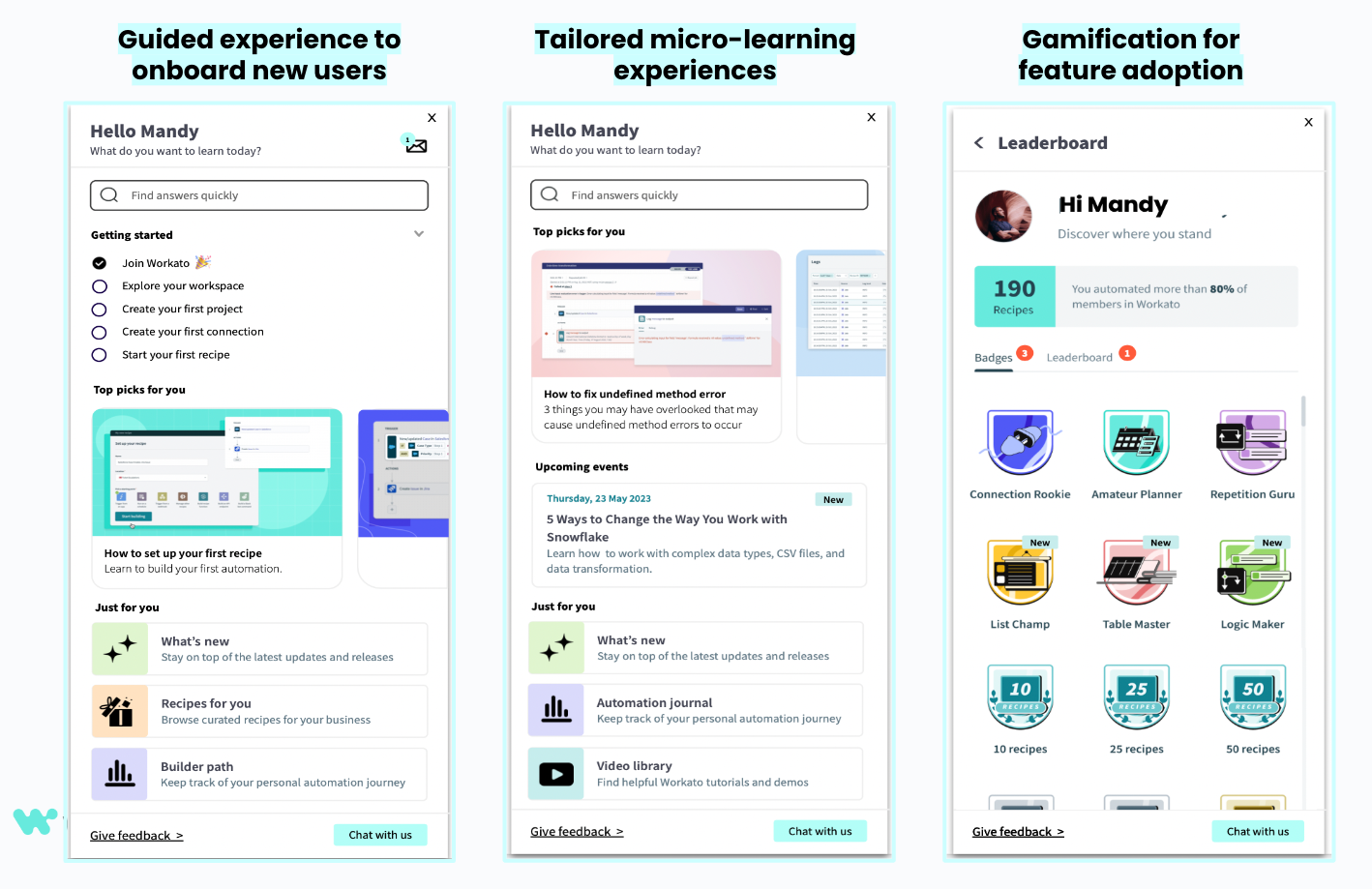How to connect product and business data to drive better outcomes
If you’re here, I’ll bet you don’t need convincing that having the right data is crucial for every team across your business in helping them make the best decisions possible.
For example: Product teams leverage Pendo’s powerful usage analytics to gain insights into user behavior, where they struggle, and how they get value from the product. This helps them prioritize work and move faster with more confidence.
But different teams use different tools to gain insights into the metrics that are the most meaningful to them. Product teams use Pendo, Sales teams use a CRM, support teams use support ticketing tools… the list goes on.
This has created a brand new problem for businesses: too much data and too few insights. We often see teams across a business collect and analyze data that is relevant to their world. But the insights generated never go beyond their own team. Without connecting the dots across teams and systems, your company can very easily miss the bigger picture.

Making the right decisions for your business starts with having the full lay of the land. Today, data-driven organizations are taking the most critical data from these different sources and blending them together in business intelligence tools. In order to make informed decisions at scale, product, success, marketing, sales, and business leadership teams need one source of truth for all the valuable data across your organization.
To explore this topic further, Cooper Triggs (Senior Product Manager at Pendo) was joined by Manav Bhatia (Principal of Strategic Partnerships at Google Cloud) and Tridivesh Sarangi (VP of Product-led Growth at Workato) to discuss the importance of building a connected data ecosystem. Scroll down to watch the recording of their full discussion, or read on for the highlights.
1. Contextualized data is your competitive advantage
In an economic climate where resources are constrained and competitive advantage is crucial, the businesses with an integrated data ecosystem are making faster decisions and remaining agile. This relies on not just data completeness, but data contextualization: Can you just see it all, or do you truly understand what the data is telling you?
For example, let’s say you’re collecting data on user behavior in your product with the help of Pendo: You’ll be able to see what each user does when they’re using your product. But the full user experience goes beyond the confines of your individual application. How did the user find out about your product? How healthy is their account? Are they reading your help center or contacting your support teams?
By contextualizing user behavior with previous browsing data—or by understanding what other resources they’re interacting with to educate themselves on your product—you can personalize that user’s experience and make your product that much more valuable to them.
Sarangi demonstrated how Workato leverages this contextualized data ecosystem by marrying Pendo product usage data with key account and user data such as company, role, use case, and more. Workato then uses that blended data to build hyper-personalized experiences using Pendo In-app Guides—fostering more successful (and therefore, better retained) users.

2. Building a data ecosystem means building bridges between teams
You shouldn’t have to be an expert on every tool your business is using to collect data. But to truly connect insights into one source of truth, you have to consider all the ways that a single person interacts with your business across product, marketing, sales, support, finance and accounting, and more. This is where data warehousing tools come in handy. They help blend and consolidate all these sources, and get the insights locked within them ready for consumption.
At Workato, the “data puzzle” is made up of insights from Salesforce and Marketo, all the way to billing tools and customer education courses. While it might be laborious to piece that data puzzle together, the benefits are undeniable. You’ll better understand your target buyer, you’ll create a common language and data source to drive decisions across teams, and you can be confident you’re making the most impactful business decisions.
3. Creating a data strategy starts with “why”
Companies often shy away from creating their own data ecosystem because the sheer volume of information is intimidating. Understandably, it can be tough to know where to begin. But according to Bhatia and Sarangi, the best data strategies start small.
To build an effective data muscle for your organization, start with your “why.” Identify a business goal (and a handful of key data sources you need to get you there) and wait until you’ve built that confidence before you expand. When it comes to data, more doesn’t always mean better: If you try to boil the ocean, you may never even make it to the insights.
“Just collecting data without a purpose is not going to get you anywhere. Ask yourself: What is the material impact we’re trying to drive here? Whether it’s growth, efficiency, or another business KPI, having that north star is important. Then, build the team around it. You’ll need a team of data experts who can make it happen… but you need to start small, experiment, learn, and scale from there.”
By starting with a clear, achievable “why,” you can build a culture of data-driven decisions across teams, and demonstrate early why connecting data sources leads to better results.
To dive deeper into the importance of creating a connected data ecosystem, check out the recording of the full discussion between Triggs, Bhatia, and Sarangi below. Interested in connecting Pendo data across your business? Request a personalized demo of Data Sync.


